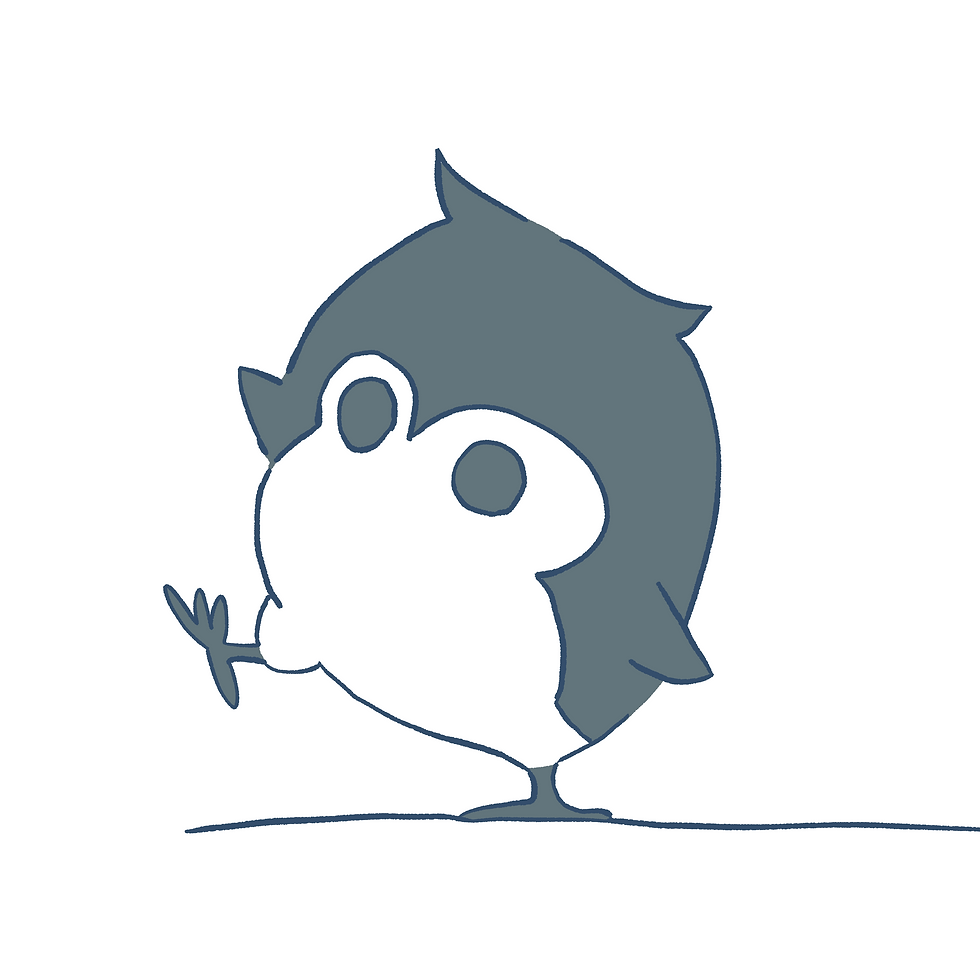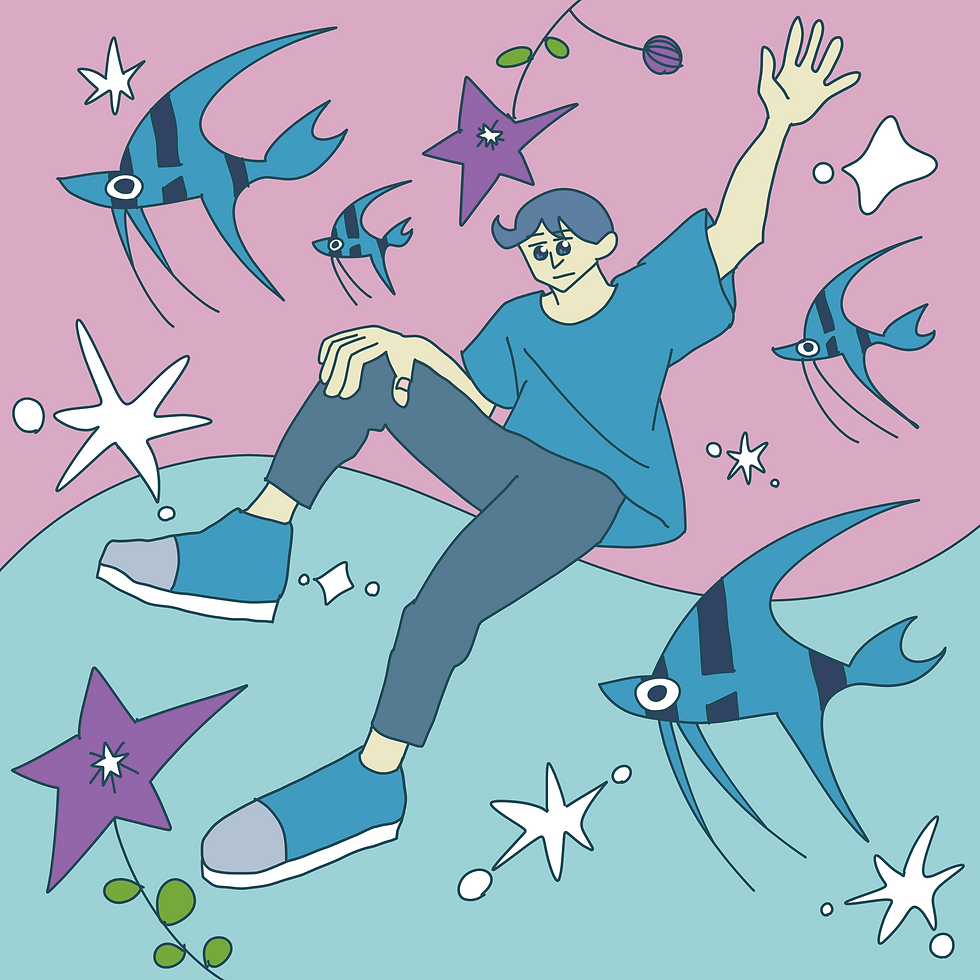
わをるぬの人生再出発、そして見つけ出した答え
- 正博 川上
- 6月21日
- 読了時間: 5分
わをるぬの人生再出発
私は精神病になりました。今は大丈夫ですが、薬を飲んでいないとまたそうなってしまう体質(脳の特性です)です。
私は刺激に過敏に反応する流行りの言葉で言えばHSPみたいな人でした。でも、他人に共感したりするのが苦手で、だけど、人とは関わりたくて、声をかけて欲しくて、そんな人間でした。反芻思考の数がものすごく多く、音楽を夜に聴くと体調を崩してかなり辛い体験をすることも多かったです。なので、どうしたら、それを防げるか、一生懸命勉強して、自分なりに対策を立てていました。
でも、それも限界を迎えたのでしょう。私は次のステップに進まなくてはならない、というところで、詳細な計画を立ててそれを実行しようとしました。私は学術的には正しく、心理学的にも正しい方法を実行しただけなのに、標準的な考え方からずれていきました。これが精神病の始まりです。自己分析をするのはこの病気にとってはあまり適切な方法ではないらしいので、私はこの体験についてはあまり深く掘り下げることをしません。ざっくり話そうかと思います。
私が発見した一部についてお話ししようと思います。時代は繰り返す。抑圧された感情が形を変えていき、また、破滅へと向かう、その中で色が私の中で意味を見出しました。白と黒、それは戦争を想起させる冷淡な色です。そして青、生命の始まりと終わり、窒息しそうな息苦しさも感じさせる色です。そして、緑とマゼンタ、生命の始まりです。私は精神病真っ只中にタブレットに描いた絵で見出しました。私の中で緑とマゼンタは再生、永遠、世界の終わりと再生を象徴するカラーです。何もないところから出てきた、植物たち。私たちは、地球の平和を守る義務がある、そんなふうに感じます。
私は青い人間にも、緑とマゼンタの人間にも、黒と白の人間にもなれます。今は、変わりました。ここで気づく人はお気づきだと思いますが、黄色がこの中にはありません。これはどうしたことでしょう。私の中では世界の循環を表すのに不要な色だったのでしょうか?いや、そんなはずはありません。私は黄色の神々しさに魅力を感じます。ただ、それは奇抜すぎて危険なカラーだと当時の私は認識した可能性があります。
一度壊れた世界を建て直すのに、私は一年以上の時間を費やしました。これは長い月日です。それでも完全には元に戻りません。精神病患者が見る世界、それはとても恐ろしいものです。笑い話になどできるはずがありません。薬で抑制が効いている人は、そこまで大きな事態を招くことは少ないと考えられます。医療が進んだ結果でしょう。でも、そういった人を差別する人たちがいます。これは非常によろしくないことです。尊重が足らないと思います。精神病になる人には色々な人がいると思いますが、必死に世界と戦っていた人だと私は思います。そんな人が、世間から冷たい目で見られ、結局、同じ立場には立つことができないというのは非常に不平等な現実だと思います。なので、私は、世界を破滅に向かわせないために、アート活動を通して闘っていきたいと思います。どうか、よろしくお願いします。
Waworunu’s New Beginning
A quiet return from the edge, and a vow to create.
I was diagnosed with a mental illness. I’m doing okay now, but I live with a brain that requires medication to stay well. Without it, I would fall back into the same darkness. It’s just how my mind is wired.
You could say I was what people nowadays might call a highly sensitive person (HSP)—I reacted intensely to stimuli. But I wasn’t good at empathizing with others. Still, I longed for connection, wished someone would talk to me. I was a person full of contradictions.
My mind was constantly looping, trapped in relentless rumination. Even listening to music at night would sometimes overwhelm me to the point of physical collapse. So I studied. I researched ways to protect myself, created routines and strategies to avoid those states.
But eventually, I hit my limit.
At a certain point, I felt I had no choice but to take the next step. I made a detailed plan and tried to carry it out. What I did was academically sound, psychologically valid—but it diverged from what society would consider “normal thinking.”
That’s where my mental illness began.
They say that deep self-analysis can sometimes worsen these conditions, so I try not to dig too far into what happened. But here, I’ll share just a bit—just enough.
One thing I discovered during that time is this:
History repeats itself. Suppressed emotions return in new forms. And when the world feels like it’s heading toward destruction, color began to speak to me in a way I had never experienced before.
Black and white—cold, emotionless, evoking war.
Blue—life’s beginning and end, suffocating, full of longing.
Green and magenta—life reborn.
I discovered these meanings while drawing on my tablet during the depths of my illness.
To me, green and magenta became symbols of regeneration, eternity, and the endless cycle of collapse and rebirth.
Plants emerging from nothing. A fragile world, rebuilt from scratch.
I began to feel that we, as human beings, have a duty to protect the peace of this planet.
I’ve come to accept that I can be all of these people:
a person of blue, a person of green and magenta, a person of black and white.
Some of you may have noticed: there is no yellow.
Why? Was it unnecessary in the cycle of my world?
No—I don’t think so.
I believe I once felt drawn to the divine brilliance of yellow.
But perhaps, in that fragile state, I saw it as too intense, too dangerous.
It took me more than a year to begin rebuilding the world inside me.
That’s a long time. And even now, I’m not “back to normal.”
The world seen through the eyes of someone with mental illness can be terrifying.
It’s not something to be joked about.
Those who are stabilized with medication may avoid major crises—and that’s thanks to medical progress. But still, stigma exists. There are people who look down on those with mental illness. That’s a serious problem. It’s a lack of respect, a lack of understanding.
People with mental illness come from all walks of life.
But I believe many of them were simply doing their best—fighting bravely against the world.
To then be cast aside, never seen as equals, is a deep and unfair reality.
And so, I’ve made a quiet vow:
Through art, I will resist the forces that drag our world toward destruction.
This is my way of fighting back.
Thank you for listening to my story.
Let’s walk forward, gently—but with strength.

コメント